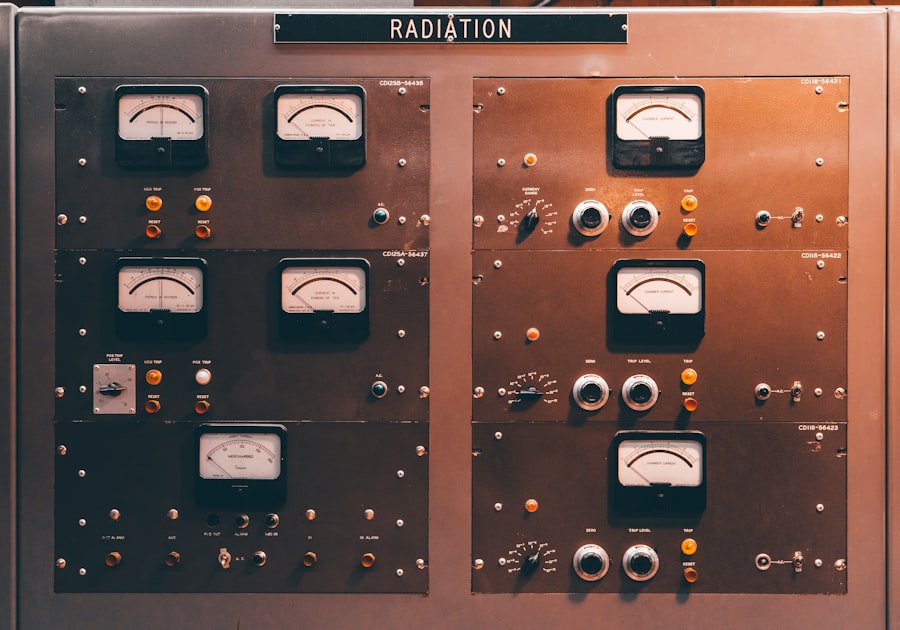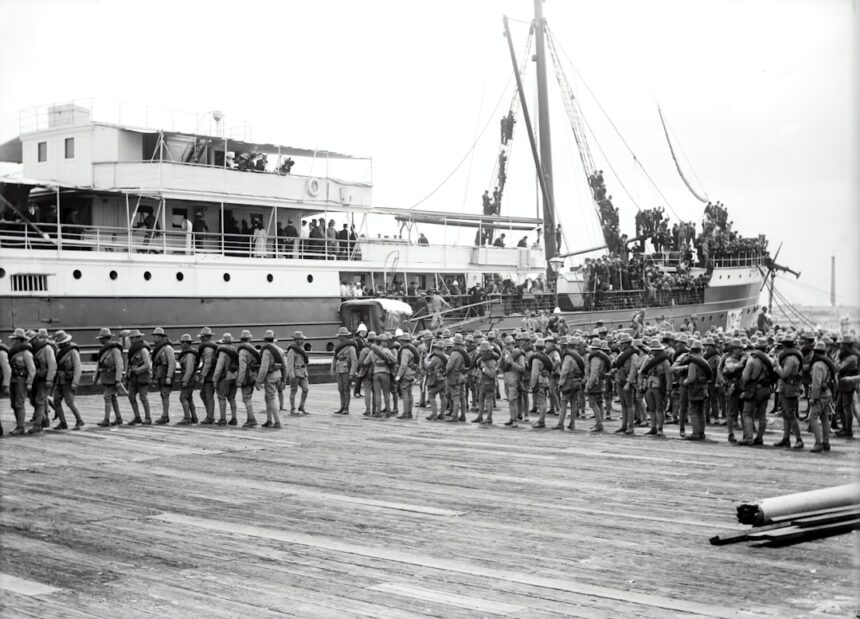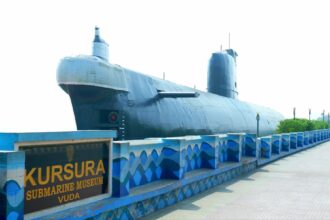The Cold War, a term that encapsulates the prolonged period of geopolitical tension between the United States and the Soviet Union, has its roots in the aftermath of World War
As the dust settled from the global conflict, two superpowers emerged, each with distinct ideologies and visions for the post-war world. The United States, championing capitalism and democracy, found itself at odds with the Soviet Union, which espoused communism and a state-controlled economy. This ideological divide was not merely a matter of political preference; it represented fundamentally different worldviews that would shape international relations for decades to come.
The origins of the Cold War can also be traced to a series of events that heightened mutual distrust. The Yalta Conference in 1945, where Allied leaders discussed the reorganization of post-war Europe, sowed seeds of suspicion. The differing interpretations of agreements made during this conference led to conflicts over Eastern Europe, where the Soviet Union sought to establish a buffer zone of communist states.
The Truman Doctrine and the Marshall Plan further exacerbated tensions, as the United States aimed to contain communism by providing economic assistance to war-torn European nations. This strategy was perceived by the Soviets as an aggressive attempt to undermine their influence, solidifying the ideological rift that would characterize the ensuing decades.
Key Takeaways
- The Cold War was a period of political tension between the United States and the Soviet Union, stemming from the aftermath of World War II.
- Ideological differences between capitalism and communism played a significant role in shaping the Cold War conflict.
- The development and proliferation of nuclear weapons heightened the stakes of the Cold War and led to a dangerous arms race.
- Espionage and intelligence operations were rampant during the Cold War, with both sides engaging in covert activities to gain strategic advantages.
- The Space Race was a key component of the Cold War, as both superpowers sought to demonstrate their technological and ideological superiority.
The Role of Ideology in the Cold War

Ideology played a pivotal role in shaping the dynamics of the Cold War, influencing not only diplomatic relations but also military strategies and domestic policies within both superpowers. The United States viewed itself as a bastion of freedom and democracy, believing that its capitalist system was superior and should be promoted globally. This belief was rooted in a historical context that emphasized individual liberties and economic prosperity as fundamental human rights.
Conversely, the Soviet Union positioned itself as the defender of the working class, advocating for a communist ideology that sought to eliminate class distinctions and promote collective ownership. The clash of these ideologies manifested in various ways throughout the Cold War. For instance, both nations engaged in extensive propaganda campaigns to promote their respective systems while discrediting the other.
The United States portrayed communism as a threat to individual freedoms and economic stability, while the Soviet Union depicted capitalism as exploitative and imperialistic. This ideological battle extended beyond mere rhetoric; it influenced foreign policy decisions, military alliances, and even cultural exchanges. The ideological divide also fueled conflicts in various regions around the world, as nations were often pressured to align with one side or the other, leading to a series of proxy wars that further entrenched the global divide.
The Impact of Nuclear Weapons on the Cold War
| Aspect | Impact |
|---|---|
| Arms Race | The development of nuclear weapons led to an arms race between the United States and the Soviet Union, resulting in a buildup of nuclear arsenals. |
| Deterrence | Nuclear weapons were seen as a deterrent against aggression, leading to a policy of mutually assured destruction (MAD) to prevent direct conflict. |
| Proxy Wars | The Cold War saw the use of nuclear weapons as a threat in proxy wars, such as the Cuban Missile Crisis and the Korean War. |
| Arms Control | The Cold War led to efforts to control the proliferation of nuclear weapons through treaties such as the Nuclear Non-Proliferation Treaty (NPT) and Strategic Arms Limitation Talks (SALT). |
| Fear of Nuclear War | The existence of nuclear weapons created a constant fear of nuclear war, influencing global politics and international relations. |
The advent of nuclear weapons marked a significant turning point in the Cold War, introducing a new dimension of fear and strategy into international relations. The development of atomic bombs during World War II by both the United States and later the Soviet Union created a precarious balance of power known as mutually assured destruction (MAD). This doctrine posited that neither superpower would initiate a nuclear conflict for fear of total annihilation, leading to a tense stalemate that defined much of the Cold War era.
However, the presence of nuclear weapons also escalated tensions and led to an arms race that consumed vast resources on both sides. Each superpower sought to outdo the other in terms of nuclear capabilities, resulting in stockpiles of weapons that could destroy entire nations multiple times over. This arms race was not limited to land-based missiles; it extended to submarine-launched ballistic missiles and intercontinental ballistic missiles (ICBMs), creating a complex web of deterrence strategies.
The fear of nuclear war loomed large over global politics, influencing diplomatic negotiations and military posturing throughout the Cold War.
Espionage and Intelligence Operations during the Cold War
Espionage became a critical component of the Cold War, as both superpowers sought to gain an upper hand through intelligence gathering and covert operations. The establishment of agencies such as the CIA in the United States and the KGB in the Soviet Union underscored the importance placed on espionage during this period. These organizations engaged in a wide array of activities, from surveillance and infiltration to disinformation campaigns aimed at undermining each other’s influence.
The significance of espionage was highlighted by several high-profile incidents that captured public attention. The U-2 incident in 1960, where an American spy plane was shot down over Soviet airspace, exemplified the risks associated with intelligence operations. Such events not only strained diplomatic relations but also fueled public paranoia about espionage activities within their own borders.
The Cold War era saw an increase in paranoia and suspicion, leading to widespread surveillance and counterintelligence efforts that permeated both societies.
The Space Race and its Connection to the Cold War

The Space Race emerged as a defining aspect of the Cold War, symbolizing not only technological competition but also ideological superiority between the United States and the Soviet Union. The launch of Sputnik by the Soviets in 1957 marked a significant milestone, demonstrating their capability to send objects into space and igniting fears in America about falling behind in technological advancements. This event catalyzed a national response in the United States, leading to increased funding for education in science and technology as well as the establishment of NASA.
The Space Race was not merely about scientific achievement; it was deeply intertwined with national pride and propaganda. Each successful mission was celebrated as evidence of ideological superiority, with both nations eager to showcase their accomplishments on a global stage. The Apollo 11 moon landing in 1969 represented a crowning achievement for the United States, reinforcing its position as a leader in technological innovation while simultaneously serving as a blow to Soviet prestige.
The competition extended beyond mere exploration; it reflected broader themes of power dynamics and national identity during a time when both superpowers sought to assert their dominance.
Proxy Wars and the Cold War
Proxy wars became a hallmark of Cold War conflicts, as both superpowers sought to expand their influence without engaging in direct military confrontation. These conflicts often played out in third-party nations where local factions aligned themselves with either the United States or the Soviet Union, leading to devastating consequences for those countries involved. From Korea to Vietnam and Afghanistan, these proxy wars were characterized by intense fighting and significant loss of life, all while serving as battlegrounds for competing ideologies.
The Korean War (1950-1953) exemplified this dynamic, with North Korea receiving support from China and the Soviet Union while South Korea was backed by American forces under a United Nations mandate. The war ended in an armistice rather than a formal peace treaty, leaving Korea divided along ideological lines—a situation that persists today. Similarly, Vietnam became another focal point for Cold War tensions, with U.S.
involvement aimed at preventing the spread of communism leading to years of conflict and profound societal upheaval.
The Role of Propaganda in the Cold War
Propaganda played an essential role in shaping public perception during the Cold War, serving as a tool for both superpowers to promote their ideologies while vilifying their adversaries. Each side utilized various media forms—films, literature, radio broadcasts—to disseminate messages that reinforced their narratives about freedom versus oppression. In this context, propaganda was not merely about information dissemination; it was about crafting an identity that resonated with citizens while fostering loyalty to national ideals.
The effectiveness of propaganda can be seen in how it influenced public opinion and policy decisions within both superpowers. In America, films like “Red Dawn” depicted communists as existential threats, instilling fear and rallying support for military interventions abroad. Conversely, Soviet propaganda portrayed capitalism as corrupt and exploitative, emphasizing social justice themes to garner support for communism both domestically and internationally.
This relentless barrage of information shaped perceptions on both sides, contributing to an atmosphere of mistrust that characterized much of the Cold War.
The Cuban Missile Crisis and its Significance in the Cold War
The Cuban Missile Crisis stands out as one of the most critical moments in Cold War history, bringing the world perilously close to nuclear conflict. In October 1962, U.S. intelligence discovered Soviet missile installations in Cuba, just 90 miles from American shores.
This revelation triggered a tense standoff between President John F. Kennedy and Soviet Premier Nikita Khrushchev, with both leaders grappling with how to respond without escalating tensions into full-scale war. The crisis highlighted not only the dangers posed by nuclear weapons but also the importance of diplomacy in averting disaster.
After days of intense negotiations and public posturing, both leaders ultimately reached an agreement: the Soviets would dismantle their missiles in Cuba in exchange for a U.S. promise not to invade Cuba and a secret agreement to remove American missiles from Turkey. This resolution marked a turning point in Cold War relations, leading to increased communication between Washington and Moscow through mechanisms like the “hotline” established between their leaders.
The End of the Cold War: Causes and Consequences
The end of the Cold War was precipitated by a confluence of factors that unfolded over several years, culminating in significant geopolitical shifts by the late 1980s. One major catalyst was internal strife within the Soviet Union itself; economic stagnation coupled with political unrest led to calls for reform under Mikhail Gorbachev’s leadership. His policies of glasnost (openness) and perestroika (restructuring) aimed at revitalizing Soviet society but inadvertently weakened state control over Eastern Europe.
As Eastern European nations began to assert their independence from Soviet influence—most notably during events like Poland’s Solidarity movement—the foundations of communist rule began to crumble. The fall of the Berlin Wall in 1989 symbolized not only Germany’s reunification but also marked a broader rejection of communist regimes across Europe. By 1991, with the dissolution of the Soviet Union itself, what had once seemed an unbreakable ideological divide had been irrevocably altered.
The Legacy of the Cold War in the 21st Century
The legacy of the Cold War continues to shape global politics in profound ways even into the 21st century. The ideological battle between capitalism and communism has evolved into new forms of conflict characterized by nationalism, terrorism, and regional disputes rather than direct superpower confrontation. Former Soviet states grapple with their identities while navigating relationships with Western powers amid lingering suspicions rooted in decades of rivalry.
Moreover, issues such as nuclear proliferation remain pressing concerns today; countries like North Korea continue to develop nuclear capabilities reminiscent of Cold War tensions. Additionally, modern geopolitical rivalries echo past conflicts as nations vie for influence over resources and strategic territories once again reminiscent of Cold War dynamics—albeit under different guises.
Uncovering New Perspectives on the Cold War through Declassified Documents
In recent years, declassified documents have provided historians and scholars with fresh insights into previously opaque aspects of Cold War history. These documents have shed light on covert operations, diplomatic negotiations, and internal debates within both superpowers that shaped key events during this tumultuous period. By examining these materials—ranging from government memos to intelligence reports—researchers have been able to construct more nuanced narratives about decision-making processes on both sides.
This newfound access has also prompted reevaluations of long-held beliefs regarding pivotal moments such as U.S.-Soviet relations during crises or assessments surrounding specific military interventions abroad. As more documents continue to be released into public view, they offer opportunities for deeper understanding while challenging existing interpretations—ultimately enriching our comprehension not only of history but also its implications for contemporary global affairs. In conclusion, understanding the multifaceted dimensions of the Cold War requires examining its origins rooted in ideological divides through its lasting impacts on modern society today—an endeavor made increasingly possible through ongoing research efforts fueled by newly accessible information from declassified sources.




